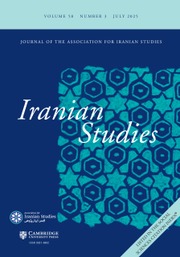No CrossRef data available.
Article contents
Ḥikāyat-i Sayyid Nāṣir-i Khusraw: Analyses of a subaltern Nizari Ismaili Text Written before the Declaration of the Qiyāmat-i buzurg (the Great Resurrection) in 559/1164
Published online by Cambridge University Press: 24 January 2025
Abstract
This treatise, possibly written between 541 and 557 (1147–1162), illuminates the perspectives of a subaltern group persecuted by the Nizari Ismaili hierarchy for agitating to bring about the manifestation (ẓuhūr) of their imam. Ismailis in Iran awaited the manifestation of a descendant of Nizār b. al-Mustanṣir who was killed in Cairo in 488/1095 after a failed attempt to succeed his father as the Fatimid imam-caliph. In 559/1164, the fourth ruler of the Nizari polity proclaimed the Qiyāmat-i buzurg (the Great Resurrection) and was subsequently recognized as the Nizari imam. This text records how its author construed the transference of imamate from Egypt to Iran. It structured continuities between the Fatimid and Nizari daʿwa (summons) and between communities of followers of Nāṣir-i Khusraw and Ḥasan-i Ṣabbāḥ, the founder of the Nizari Ismaili polity. If the dating is correct, then the Ḥikāyat is one of the earliest known Nizari texts and is a very early exemplar of the Nizari appropriations of the poet, philosopher, and Fatimid dāʿī (summoner), Nāṣir-i Khusraw.
Keywords
- Type
- Article
- Information
- Copyright
- Copyright © The Author(s), 2025. Published by Cambridge University Press on behalf of The Association for Iranian Studies



